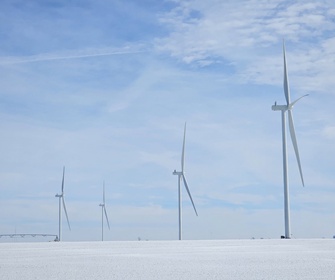Wind turbine orders in Q3 2022 fell by 36% compared with Q3 2021. Europe urgently needs to solve permitting and strengthen its wind energy supply chain.
Inflationary cost pressures, slow permitting and uncertainty around the EU’s emergency electricity market interventions are stalling orders for new wind turbines. WindEurope tracked orders for new wind turbines with a total of 2 GW in Q3 2022.
The orders came from 9 countries. They were all for onshore wind turbines. Finland ordered most new capacity with 322 MW, followed by the Sweden and Germany.This brings total orders in 2022 to 7.7 GW - far off from what Europe needs to reach its energy and climate targets. The EU wants 510 GW of wind energy by 2030. This means the wind industry should install 39 GW of new wind each year up to 2030. At the current rate of turbine orders Europe would fall well short of this target.
The Q3 numbers are part of a downward trend in wind turbine orders. Disclosed wind turbine orders* in Q1 2021 were at 2.8 GW and have been generally decreasing since.
The rapid deployment of wind energy has never been more urgent – for energy security, for the climate, and for affordable energy prices. This requires a step change in EU policy: to accelerate permitting of new projects, give renewables investors visibility, and strengthen and expand of the European wind supply chain.
Alongside improvements to permitting, investors and developers need clarity on future revenues to be able to move ahead with new projects and order new turbines. National Governments must clarify their approach to revenue caps on inframarginal producers of electricity (such as wind) as soon as possible in line with the industry’s 6 recommendations.National revenue caps should therefore follow these 6 points:
- Keep the revenue cap technology neutral and ensure it incentivises investments in renewables.
- Do not apply revenue caps retroactively.
- Avoid changes to the cap once it’s set and give advance notice if the cap is extended.
- Avoid capping and taxing the same revenue.
- Get generators to assess their revenues on a monthly basis, not less than that.
- Factor in how different revenue caps will affect cross border transactions.
Slow permitting and insufficient market size continue to harm the European wind energy supply chain. And costs for raw materials, components and international shipping have risen sharply, increasing the pressure on the European wind industry. The industry needs political support.








